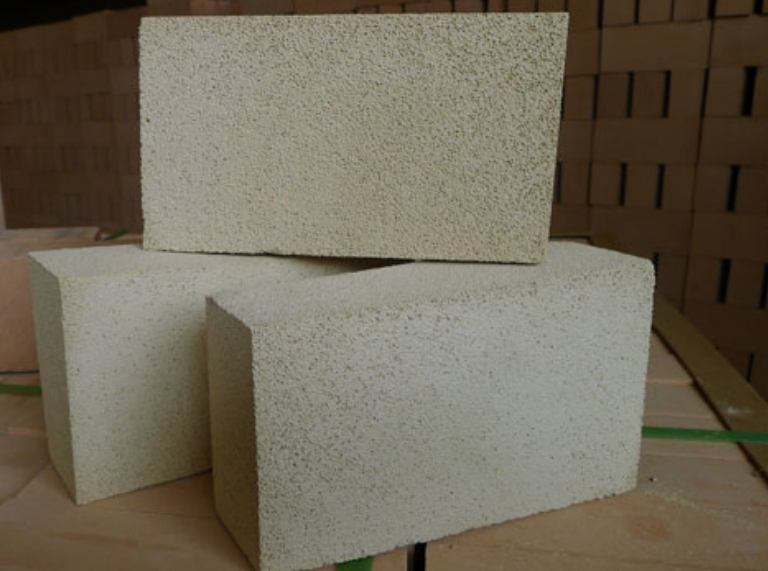The Best Solution For Energy Saving And Reducing CO2 Emission
The Best Solution For Energy Saving And Reducing CO2 Emission
 Tel: +86-532-85717690/85717352/85832089
Tel: +86-532-85717690/85717352/85832089 E-mail: wam@wamcn.net
E-mail: wam@wamcn.net
Kilns, forges, and furnaces use IFB (Insulating Fire Bricks), commonly referred to as Soft Bricks, which are high temperature, light refractories.
Fire bricks that act as insulation are lightweight and soft. Any hand tool, such as a chisel or even a drill bit, can be used to quickly cut them.
Insulating bricks can be any color, but often range from light brown to white; for example, see the photographs. The finest insulation in refractory materials is air, which is why insulating firebricks have excellent insulating qualities.
This article will discuss the use of insulating fire bricks in high-temperature applications.
Fire brick insulation is widely used, mostly in industrial and hobby kilns fueled with gas burners or spiral electric elements and furnaces, both for hot face lining or exterior backup heat insulation.
Important:
Although insulating bricks are refractory and can, of course, sustain extremely high temperatures, they have a very limited thermal conductivity and do not at all effectively absorb heat.
Those are plans for insulating the heat. For example, if you utilized them to construct the hot face in a wood-burning oven (to cook), the oven wouldn't cook because it couldn't store and hold nearly any heat.
However, if you want to get excellent results, use these insulating fire bricks on the outside (of the heavy firebrick walls, vault, or under the floor bricks and slab). a properly insulated oven that will retain the absorbed heat in its mass and keep food warm for a prolonged period.
There are various advantages to insulating firebrick, including:
Because BNZ IFB is lightweight and has a high insulation value, thinner furnace walls, increased efficiency, and lower running costs are all made possible.
IFB's strong compressive strength makes it possible for structures to be self-supporting at high temperatures. IFB works well with dense fire brick and strengthens the entire structure.

In cyclically run heating equipment, less heat is stored compared to dense brick, which results in lower fuel costs and faster heat-ups.
Iron impurities, which can negatively impact refractory performance in many applications, are minimal in BNZ IFB. They are utilized in numerous furnaces with regulated environments.
Courses may be laid quickly and simply because BNZ Insulating Fire Brick is machined to precise dimensions. This results in a stronger, tighter refractory lining with less heat loss via the joints.
1. The characteristics of fire bricks are:
2. Resistance to high temperatures.
3. Hardiness to abrupt temperature fluctuations.
4. Increased pressure resistance at higher temperatures.
5. Minimal or no expansion when temps are greater.
6. Resistance to deterioration.
7. Defying oxidation or reduction reactions.
8. Resistance to unintentional strikes.
9. High resistance to wear from metal, slag, dust, and other materials.
10. High-temperature low absorption property.
11. Be consistent in their composition, size, and shape.
Clay, kaolin, kyanite, mullite, (light) chamotte, sillimanite, and andalusite are among the most typical raw materials used for IFB, and this makes them way better than conventional bricks.
So, in case you are interested in purchasing an insulating fire brick or learning more about it, get in touch with us.